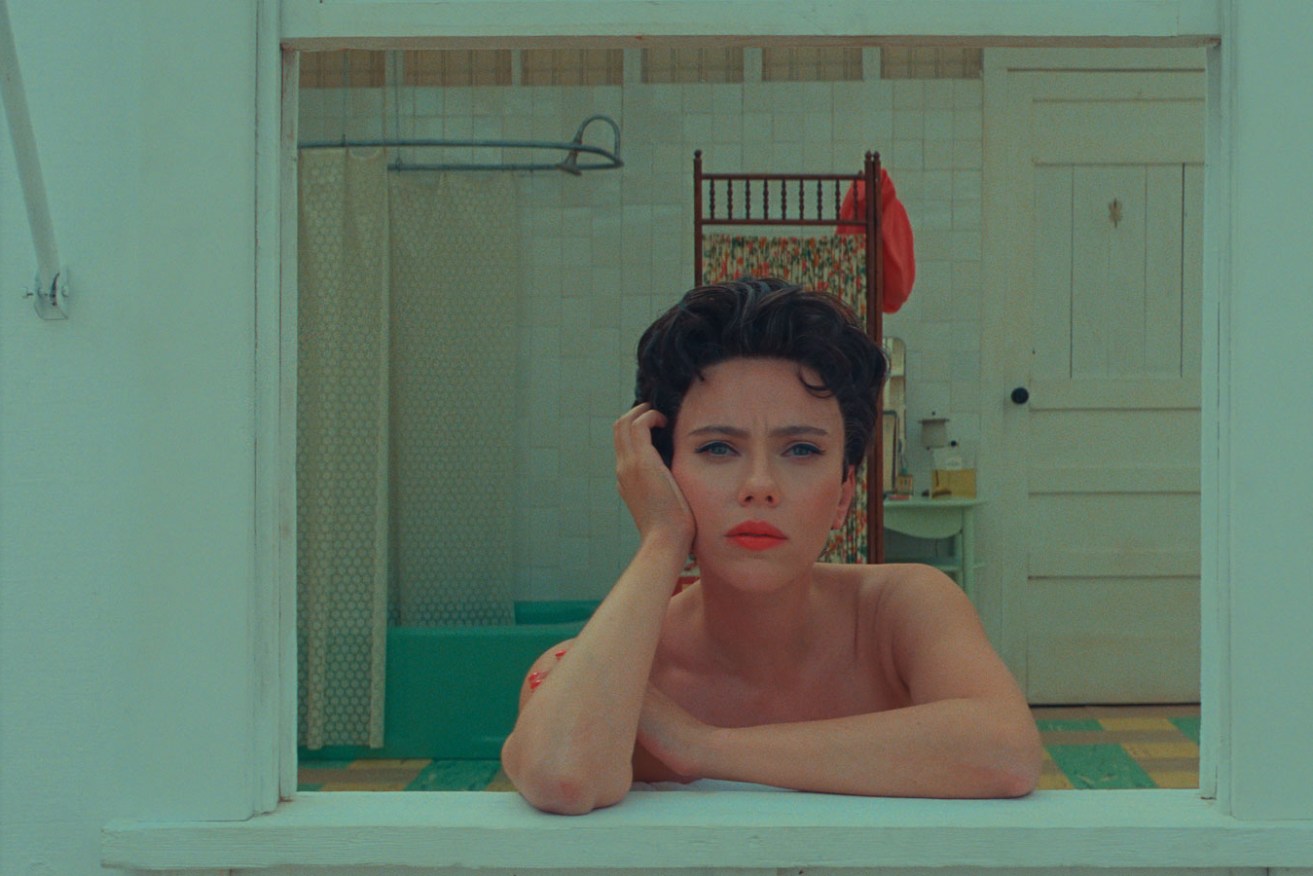Film review: Asteroid City
Wes Anderson’s Asteroid City once again nests stories within whimsical stories in this film about a 1950s TV show that is in turn about the writing of a play set in a tiny, desert town in Atomic Age America.


Scarlett Johansson in Wes Anderson's 'Asteroid City'. Photo: Courtesy Pop 87 Productions / Focus Features
There’s no mistaking the look and feel of an Anderson film. Ingenious world-building, a staggering all-star cast and a highly curated individual aesthetic are all essential elements of his signature style. Even the writing has its own Andersonian flavour: stories inside stories exploring grief and longing while the petty concerns of human existence play out alongside the great universal mysteries. And, as always in a Wes Anderson film, a young boy comes of age.
Asteroid City is a checklist of these directorial and script-writing traits – it’s all very meta, and to be honest, at times confusing, yet still quirkily mesmerising in a way that is quintessentially Wes Anderson.
The film opens in box ratio black-and-white. It’s a 1950s television studio with host Bryan Cranston introducing a program that is a backstage look at the creation of a theatrical play. The playwright (Edward Norton) talks the audience through the writing of his new work, Asteroid City, giving a detailed description of the characters and setting, right down to its act structure and the clean yet unforgiving quality of the light.
The ‘play’ then floods the screen in full colour with a train chugging through the desert carrying a quirky assortment of goods such as pecans, avocados, Pontiacs and a nuclear warhead. Yet this ‘play’ has no sense of the theatre about it – this is an unashamedly Wes Anderson world – a tiny south-western desert town with a colourful 1950s Americana palette but everything slightly dusty and bleached by the desert sun.
In the first act, we meet recently widowed war-photographer Augie Steenbeck (Jason Schwartzman), his exceptionally intelligent teenage son Woodrow (Jake Ryan), and three delightfully hilarious young daughters. They are travelling to the town for Asteroid Day (commemorating the site of a meteor crash on September 23, 3007 BC). Woodrow is among a group of exceptional teens receiving awards and, with the arrival of their families along with a bizarre assortment of astronomers, military officers, singing cowboys and a busload of Christian Junior Stargazers, the small motel with its vending machines of snacks, martinis and real-estate is packed to capacity.
Even though the plot spins out to explore the anxiety of the 1950s about extra-terrestrial life (despite an unremarked on backdrop of mushroom clouds and quaking from nearby nuclear testing), at the film’s heart are two burgeoning relationships. Woodrow is falling in love with a fellow Junior Stargazer while at the same time dealing with the fact his father has only just told him and his sisters of their mother’s death three weeks ago, showing them her ashes which he’s carrying around in Tupperware.
The object of Woodrow’s attraction happens to be the daughter of Hollywood star Midge Campbell (Scarlett Johansson). Midge and Augie’s relationship blossoms when they find themselves in neighbouring motel cabins. With striking shot composition, we see the pair open up to each other in snappily scripted dialogue, their faces framed by windows with their cabin interiors weirdly well-lit behind them.
As the story rolls on we are constantly thrown out of the action by both the announcement placards of the play’s acts and scenes and the interjection of narrative from the 1950s television show in which this play is embedded. This constant yanking of the audience back into the framing narrative of the television show and the knowledge we are watching a story within another story is jarring but somehow necessary – as if Wes Anderson realises his worlds are too easy to relax into and he wants us sharp and aware of every choice he makes.
As a committed fan of this director’s work, my expectations of this film were high. Perhaps too high. While the world-building, dioramas and cinematography were all exceptional, in the end it was the storytelling that, for this reviewer, made this film dip below the standard of his other works such as The Grand Budapest Hotel, The Life Aquatic with Steve Zissou and Moonrise Kingdom.
It was as if in trying to move beyond his past achievements, Anderson’s desire for ornate structure and intricate storytelling has driven his work into a realm where the organisation of time and space has become so complicated that the structure has overwhelmed the story.
Asteroid City is visually enchanting, structurally complex and a delightfully bizarre take on the anxieties preoccupying 1950s America. Fans of Wes Anderson’s worlds will find much to love and discuss, but this may be one of his catalogue that appeals to more lovers of his aesthetic than his stories.
This article is republished from InReview under a Creative Commons licence. Read the original article.
InReview is an open access, non-profit arts and culture journalism project. Readers can support our work with a donation. Subscribe to InReview’s free weekly newsletter here.
![]()




